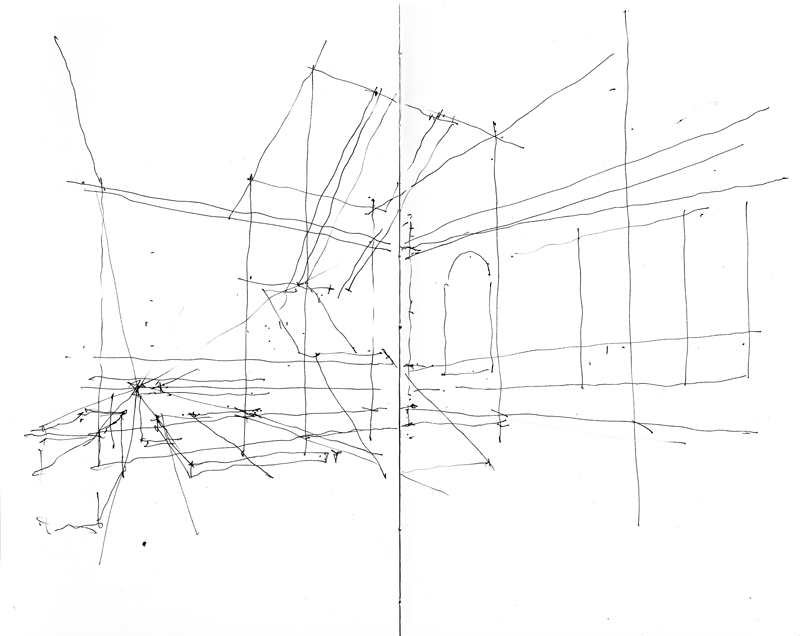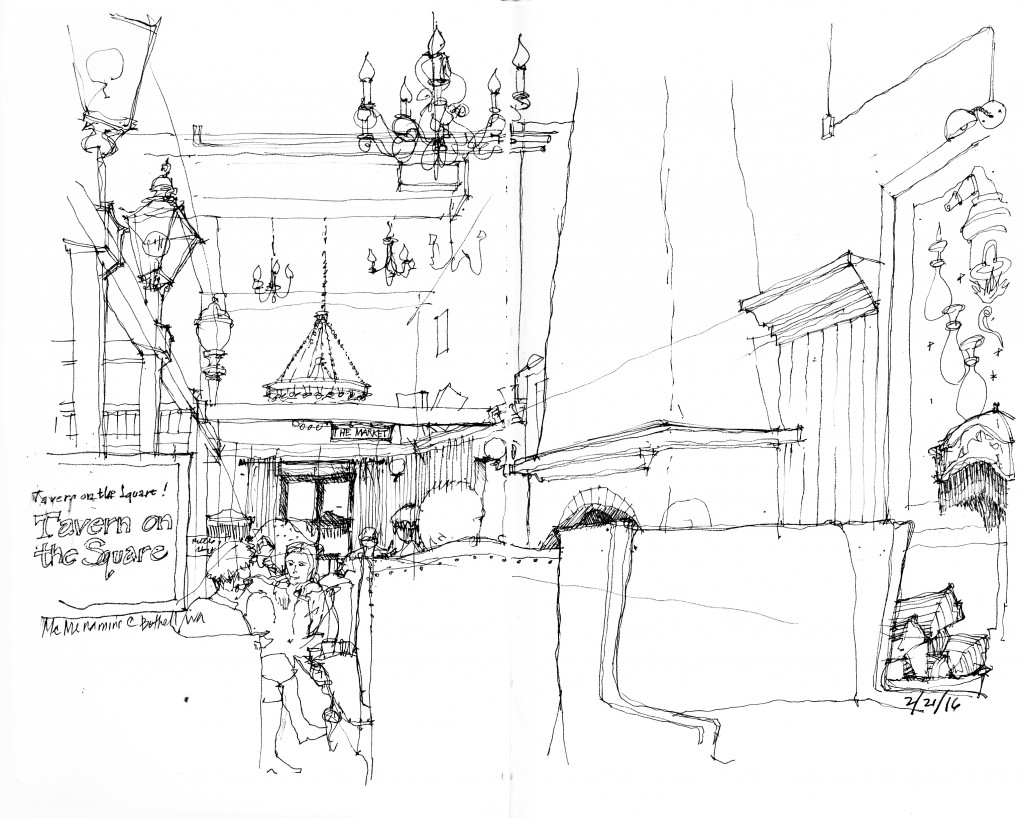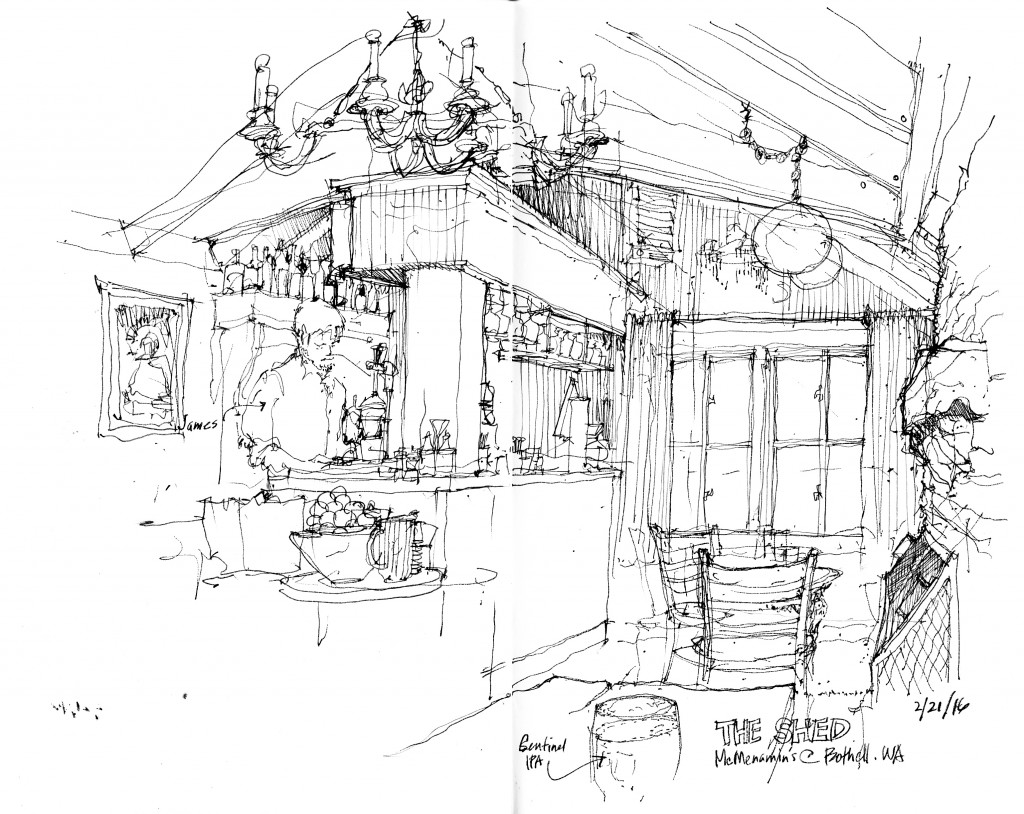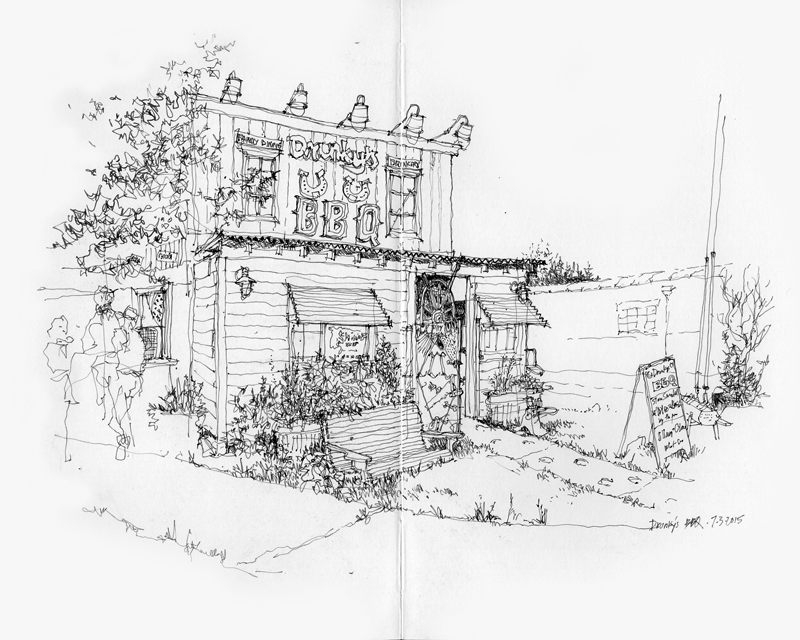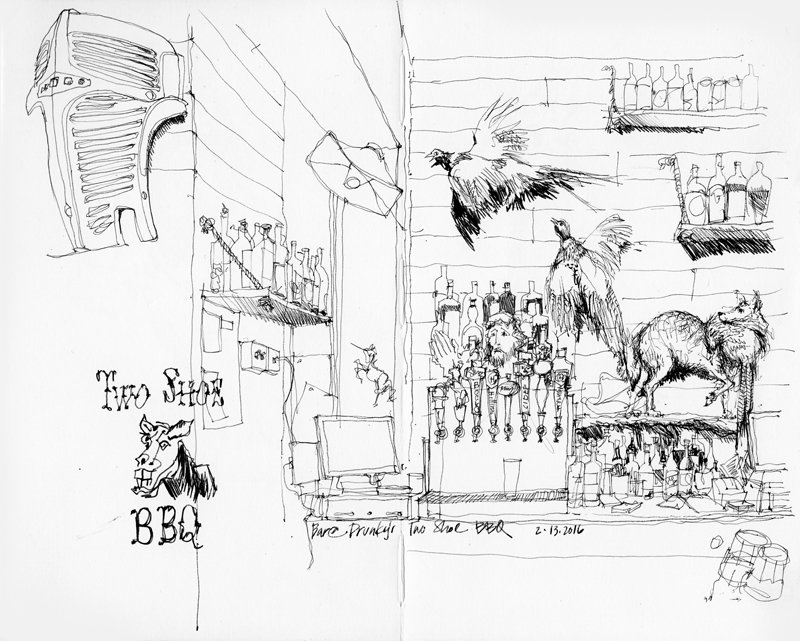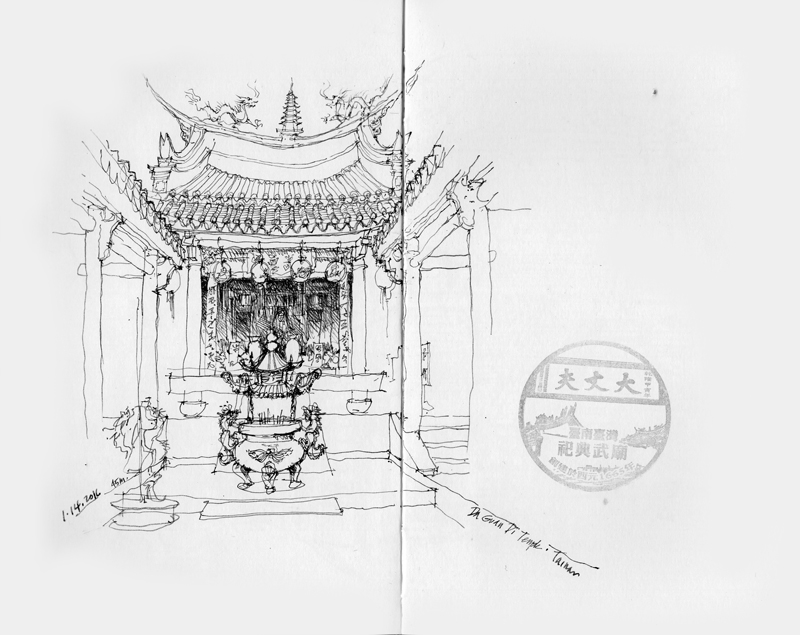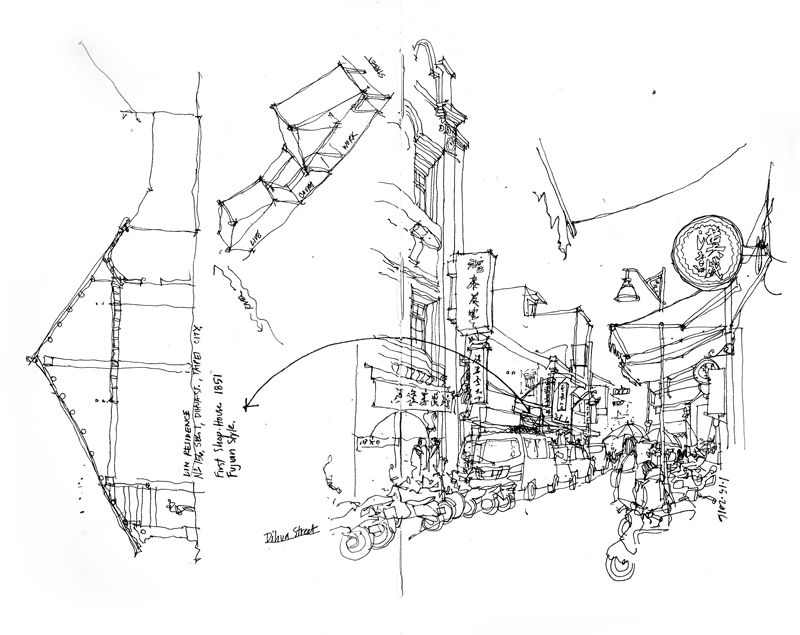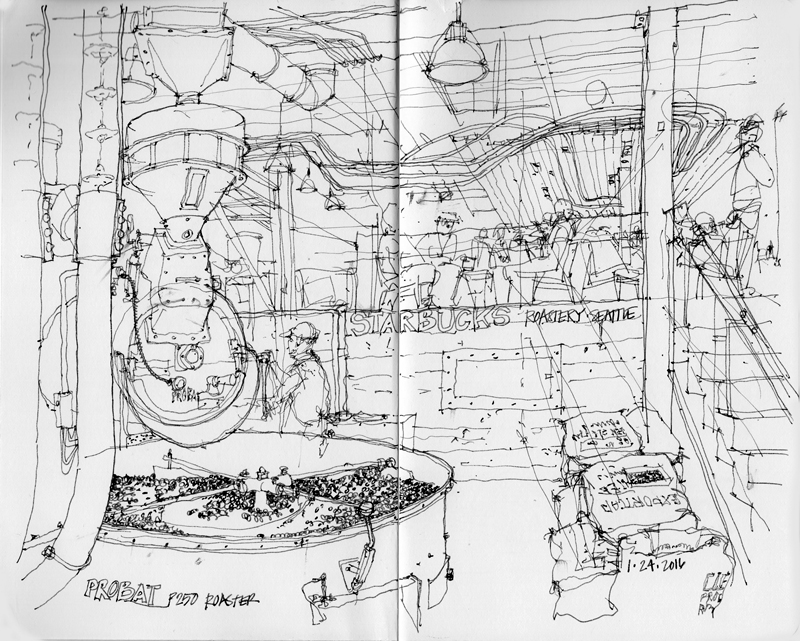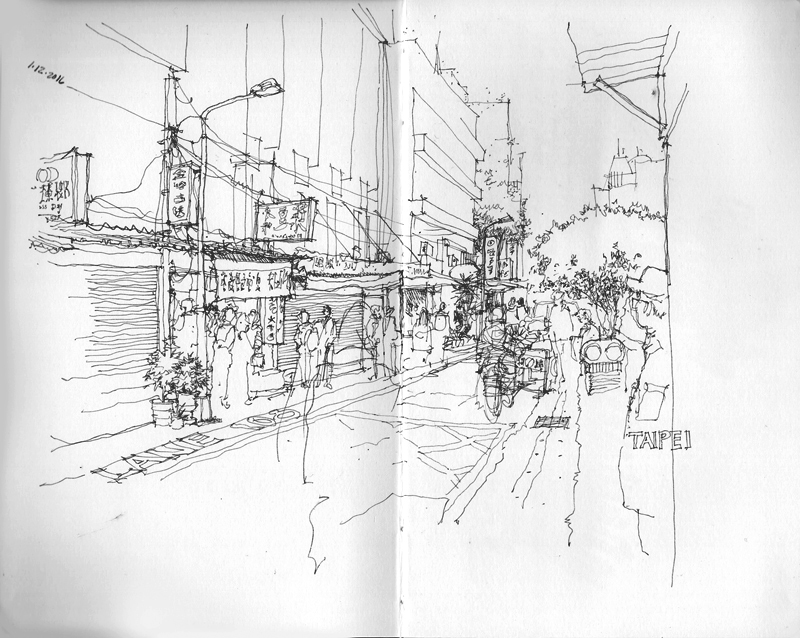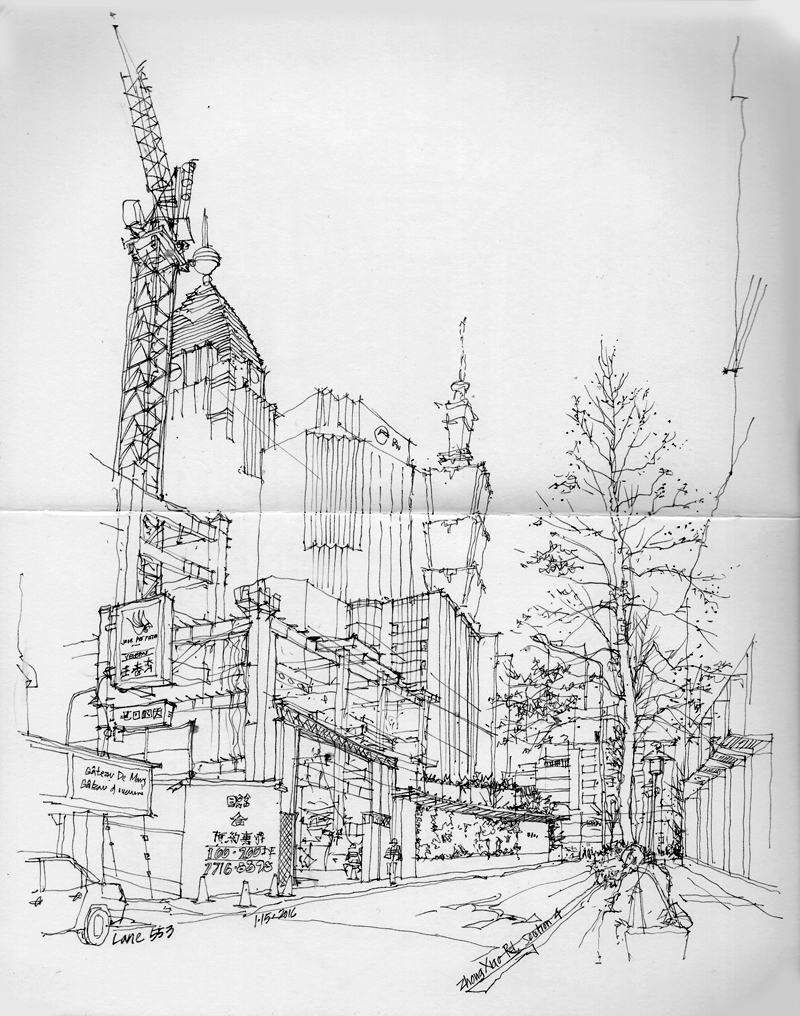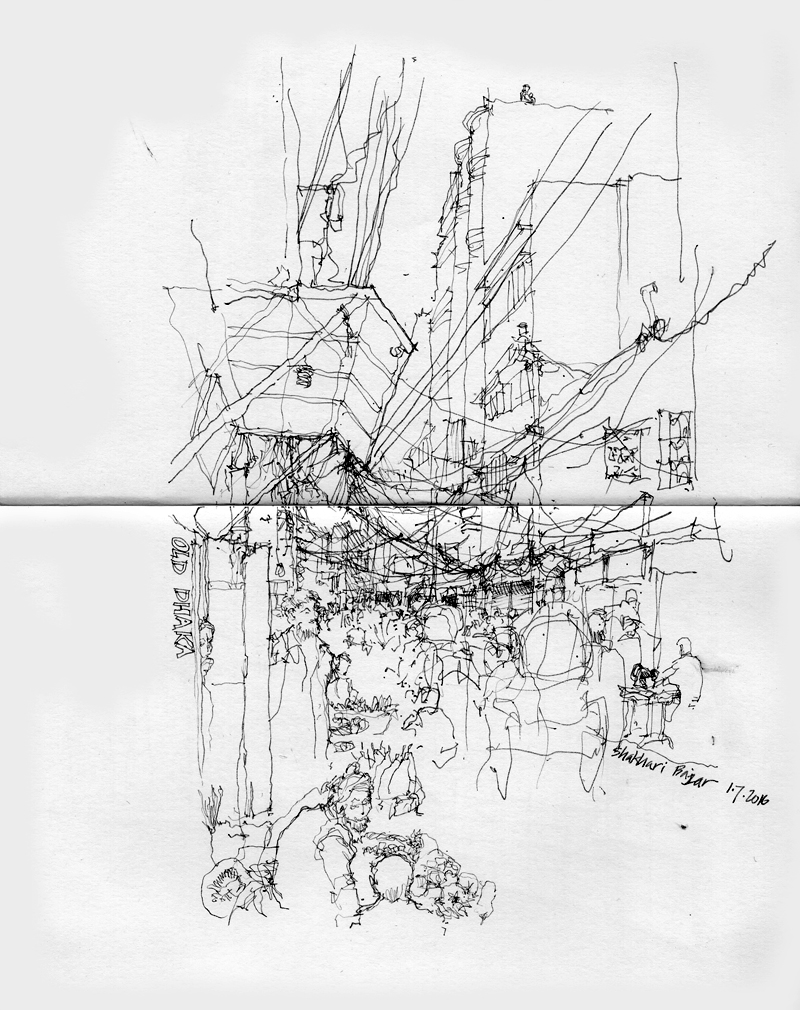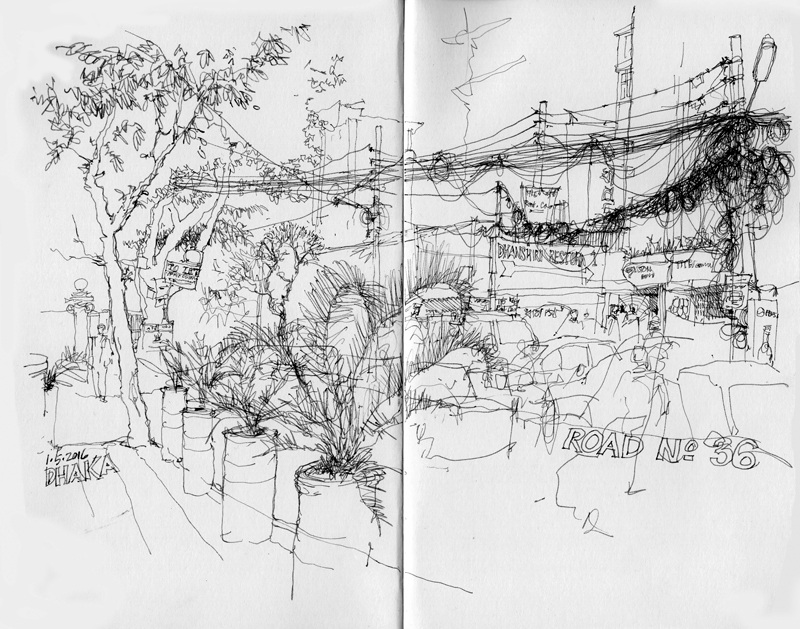Union Station opened in 1911 to serve the Union Pacific Railroad and the Milwaukee Road, just across from the King Street Station, which opened five years earlier to serve the Great Northern and Northern Pacific railways. It was originally named the Oregon and Washington Station after the Oregon-Washington Railroad Company that built it. The Milwaukee Road pulled out of the northwest market in 1961 and Union Pacific ceased its passenger service to Union Station ten years later. After 30 years of vacant dormancy, Paul Allen helped fund a renovation that resulted in Union Station winning the 2000 National Historic Preservation Award. The station now serves as the headquarters of Sound Transit, the commuter rail agency serving the Puget Sound region. This grand hall, featuring a vaulted ceiling that rises 55 feet, can be rented out to the public for special events.
Category Archives: Drawing
Architectures of Life
Alva Noë recently wrote an article on NPR.org about a new show Architectures of Life at the Berkeley Art Museum, curated by Lawrence Rinder. To quote from the piece:
“We forget that it is hard to see. To paraphrase Kant (loosely), seeing without understanding is blind, even if understanding without seeing is empty. A good drawing—for example of the working parts of an engine—is often much easier to interpret than an actual perceptual encounter with the engine itself. The engine, after all, is very complicated. What is important? What deserves notice? It’s hard to know. But the drawing, when it is successful, is more than a mere representation; it is, really, the exhibition of what something is, of how it works, of what it is for. A good drawing is an image that has been imbued with thought.”
I like how Noë stresses that drawings are more than mere reproductions of what we see or envision. To read the full article, please visit: <http://www.npr.org/sections/13.7/2016/02/26/468216993/life-and-art-unite-in-architectures-of-life>.
Fran’s Chocolates
Many credit Fran Bigelow with helping to bring about the artisan chocolate renaissance in the U.S. Earlier this year, she opened her fourth retail store in the original Seattle Brewing and Malting Company building in the Georgetown neighborhood, built in the 1880s. The grand old structure now houses Fran’s production facilities as well as an elegant showroom of Fran’s signature chocolate truffles, bars, and caramels.
This second drawing shows how I blocked out the initial structure for the scene above.
McMenamin’s–Anderson School
I drew this view of the lounge space adjoining the Tavern on the Square restaurant when the Seattle Urban Sketchers met yesterday at McMenamin’s–Anderson School. McMenamin’s is a chain of brewpubs, hotels, and music venues, mostly in the Portland area but with other locations in Oregon and Washington; many are housed in historical properties. Their latest venue is the Anderson School complex in Bothell, north of Seattle. Originally built in 1913 as the Bothell Junior High School, it was renamed in 1956 to honor the school’s first principal, W.A. Anderson.
This view was sketched in the cozy space of The Shed while enjoying the warmth of a wood-burning fireplace and a glass of McMenamin’s Centinel IPA served by James the friendly bartender.
A Bar Scene
Thinking of Tainan
Thoughts and prayers to the people of Tainan in the wake of last week’s earthquake. Originally established by the Dutch East India Company as Fort Zeelandia, Tainan is one of Taiwan’s oldest cities and served as its capital for over 200 years. One of my memories from visiting this ancient city is Guan Di Temple, built in the 17th century. Guan Di was a legendary hero of the Three Kingdoms Period and is worshipped in both Chinese Buddhism and Taoism
Happy Chinese New Year!
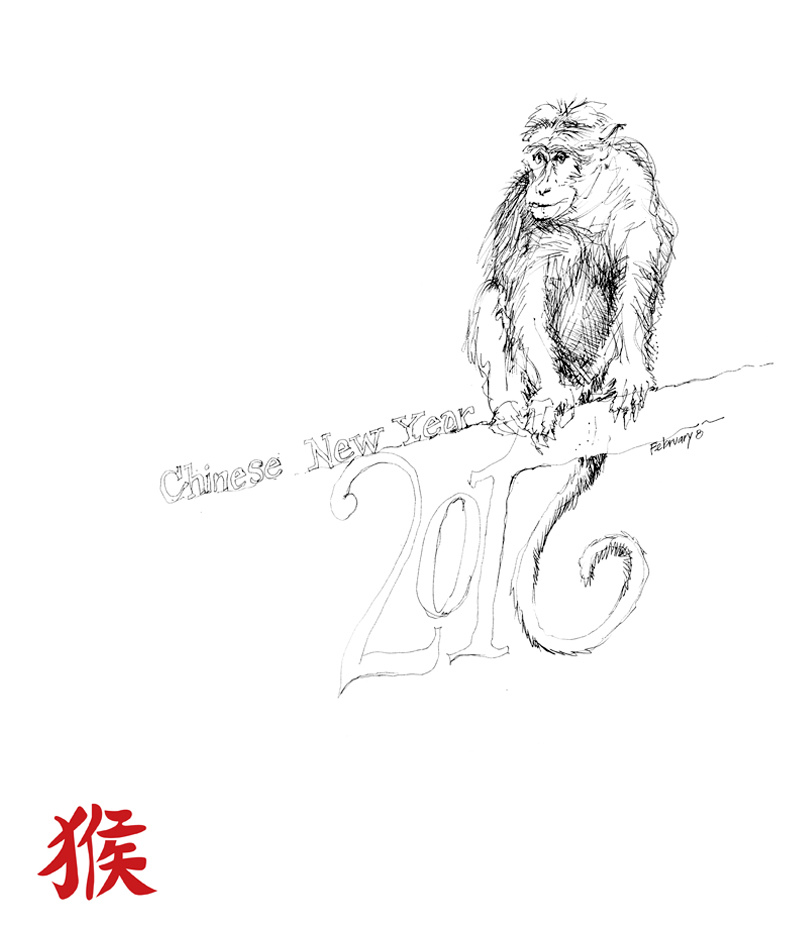 The Chinese New Year typically falls on the second full moon after the winter solstice. This year, that date is February 9 and 2016 is the Year of the Fire Monkey. The monkey is said to be clever while fire brings energy and determination to those with this sign. Among those born in the Year of the Monkey are Julius Caesar, Leonardo da Vinci, Charles Dickens, and Mick Jagger.
The Chinese New Year typically falls on the second full moon after the winter solstice. This year, that date is February 9 and 2016 is the Year of the Fire Monkey. The monkey is said to be clever while fire brings energy and determination to those with this sign. Among those born in the Year of the Monkey are Julius Caesar, Leonardo da Vinci, Charles Dickens, and Mick Jagger.
The Lin Shophouse on Dihua Street
Lining Dihua Street in the Datong District of Taipei are historical shophouses, many of which are selling Chinese herbs and medicines, especially for the upcoming Chinese New Year festivities. The 19th-century shophouse is characteristic of many Southeast Asian cities, combining a shop or working space facing the street with living quarters either above or to the rear of a deep, narrow lot.
The Lin Shophouse, built in 1851, is said to be the first shophouse along Dihua Street. I first drew a partial section of the front “shop” part of the structure as I walked through the spaces and then sketched an overview of the complex showing how the shop space faces the street and is separated by a courtyard from the living quarters in the rear. In the street view, one hardly notices the Lin Shophouse as it has been obscured by later shophouses that rose two or three stories high, with Baroque-style facades that were popular during Japan’s Taisho Period.
1516 Melrose Avenue
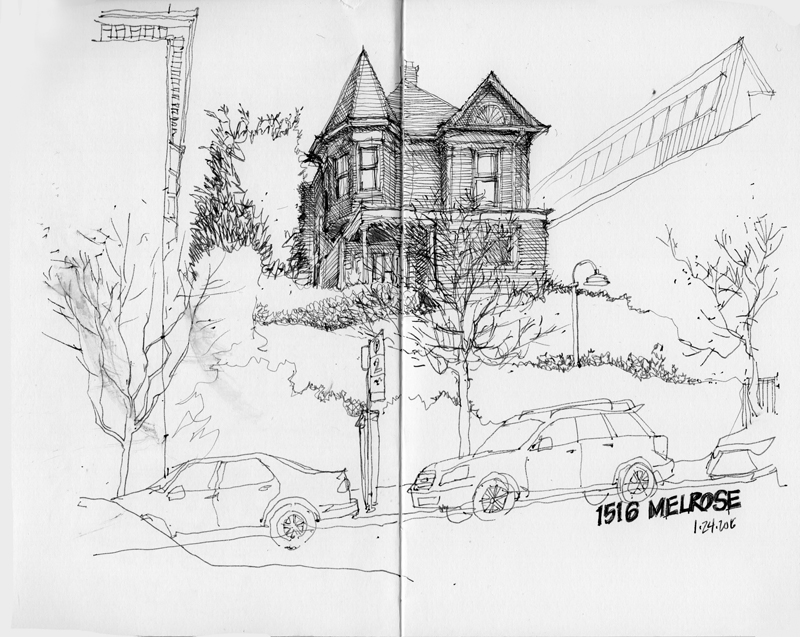 During the last Seattle Urban Sketchers meet-up in the Capitol Hill neighborhood, this particular view drew my attention because of its strong gestalt of a dark house, reached via a series of paths zigzagging up an ivy-covered slope. There appears to be a force field that is repelling the apartment building to the north and a remodel to the south. How much longer will the force field hold up against the forces of development?
During the last Seattle Urban Sketchers meet-up in the Capitol Hill neighborhood, this particular view drew my attention because of its strong gestalt of a dark house, reached via a series of paths zigzagging up an ivy-covered slope. There appears to be a force field that is repelling the apartment building to the north and a remodel to the south. How much longer will the force field hold up against the forces of development?
An entirely different type of view is this busy interior of the Starbucks Reserve Roastery and Tasting Room, featuring the Probat P Series solid drum roaster.
Street Views of Taipei and Old Dhaka
After my visit to Dhaka, I headed to Taipei for another series of workshops with students of the National Taipei University of Technology (NTUT). In Taipei as in other cities there is a hierarchy of right-of-ways, from the relatively narrow “lanes” connecting wider “streets,” which, in turn, lead to broader “roads” that we might call avenues or boulevards. The day after I arrived and before the workshops started, I drew the view above of Lane 108 near my hotel.
This view, also down a lane, drew my attention because of the way it layered the old and the new, with Taipei 101—the world’s tallest building from 2004 until 2009, when the Burj Khalifa was erected in Dubai—rising in the background.
It’s interesting to compare the street views of Taipei with two I drew in Dhaka. In contrast to the relative orderliness of Taipei, we have the “informality” of Dhaka. But as one Bangladeshi told me: “Within the informal, there is the formal.” Shakhari Bazar is typical of the narrow lanes in Old Dhaka, lined with vendors and shops and flooded with pedestrians and rickshaws streaming through in both directions. Thanks to Professor Abu Shajahan and Sumaiyah Mamun for showing me around this historic district.
I drew this view to record a recurring sight along the streets of Dhaka, the large bundles of cables and wiring that carry electricity and communications to buildings.




